Australia’s vast and arid landscape is usually linked with desert landscapes or coastal areas. It is a breathtakingly gorgeous land with tranquil beaches, sparkling lakes, bright reefs, and fascinating fauna. However, it does have a significant number of major lakes scattered all over its territory. The country is full of beautiful lakes, and when the sun shines over the white sand, the scene is mesmerizing.
Most of these lakes are saline or endorheic due to the climate. Their water levels change with the seasons, and the dry season’s heat results in high salt levels in most regions. If you ever wondered where to enjoy the country’s lakes, here is a list of the 16 biggest lakes in Australia and other fascinating facts.
The 16 Biggest Lakes in Australia
16. Lake Corangamite

Australia’s largest permanent lake is Lake Corangamite.
©iStock.com/StephaneDebove
Lake Corangamite is a hypersaline endorheic lake on the Victorian Volcanic Plains in southwest Victoria, Australia. It is Australia’s largest permanent lake, with a surface area of roughly 57,820 acres (23,000 hectares) and a diameter of around 31 miles. Fish populations in Lake Corangamite are declining due to growing salinity, exacerbated by ongoing dry seasons, posing a risk to the avian life that feeds on them.
15. Lake Gordon
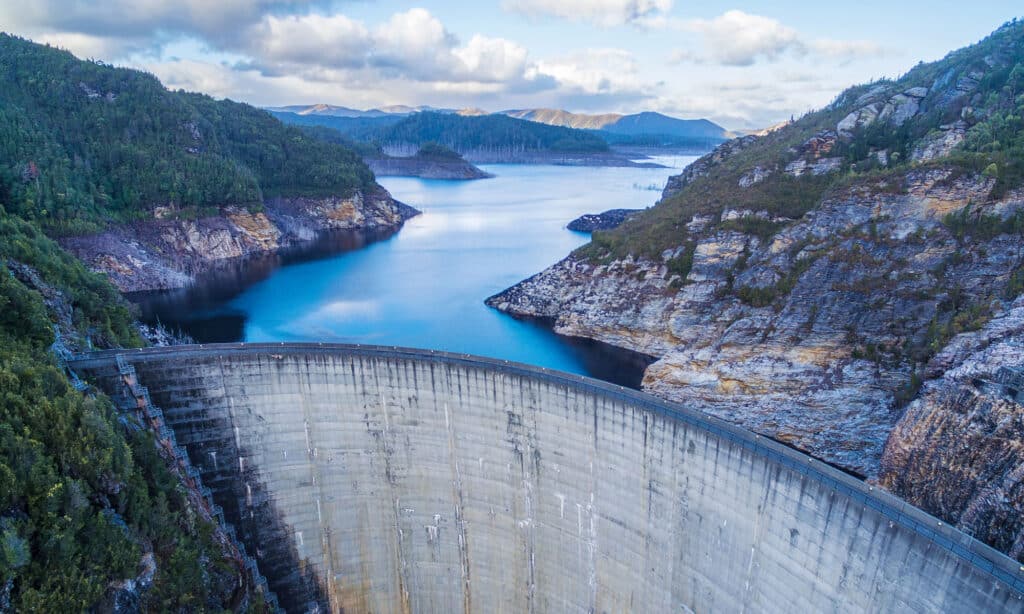
Tasmania’s largest lake is Lake Gordon.
©Greg Brave/Shutterstock.com
Lake Gordon is a man-made reservoir constructed by the 459-foot-high Gordon Dam, which dammed the Gordon River. The lake is situated in the southwest of Tasmania, an Australian island state. With a catchment area of 778 square miles and a surface area of 69,000 acres (278 km2), Lake Gordon is Tasmania’s largest lake. The reservoir was built in the early 1970s to provide additional storage for the Gordon Generating Station, Tasmania’s largest and most contentious hydroelectric power project.
14. Gippsland Lakes
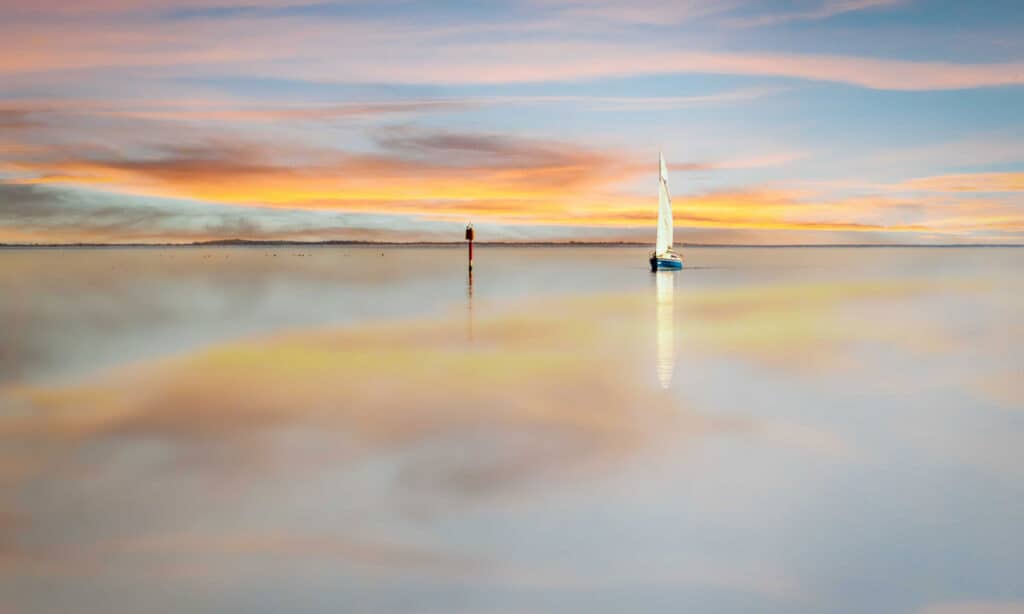
Australia’s largest inland waterways are the Gippsland Lakes.
©iStock.com/Nicole Patience
The Gippsland Lakes, which occupy 103,784 acres and include a network of coastal lakes, wetlands, and lagoons in East Gippsland, Victoria, Australia, are the country’s largest inland waterways. The Gippsland Lakes are a wildlife paradise that harbors a unique population of dolphins while also allowing other birds and marine life to flourish. The numerous tiny islands that rise above the water can be reached by boat or water taxi.
BirdLife International designated the lakes as an Important Bird Area (IBA) since they contain over 1% of the global number of chestnut teals, black swans, musk ducks, and a large population of fairy tales terns.
13. Lake Way
Approximately 9.3 miles south of Wiluna in Western Australia’s Mid West area lies Lake Way, a dry saline lake that ranks as one of the country’s largest. The Centipede–Lake Way project, which covers a surface area of 113,668 acres (460 km2), is one of Western Australia’s most developed uranium mining projects. Salt Lake Potash is establishing the Lake Way sulfate of potash (SOP) project, which is planned to generate 245,000tpa of SOP during a mine life of over two decades.
12. Menindee Lakes
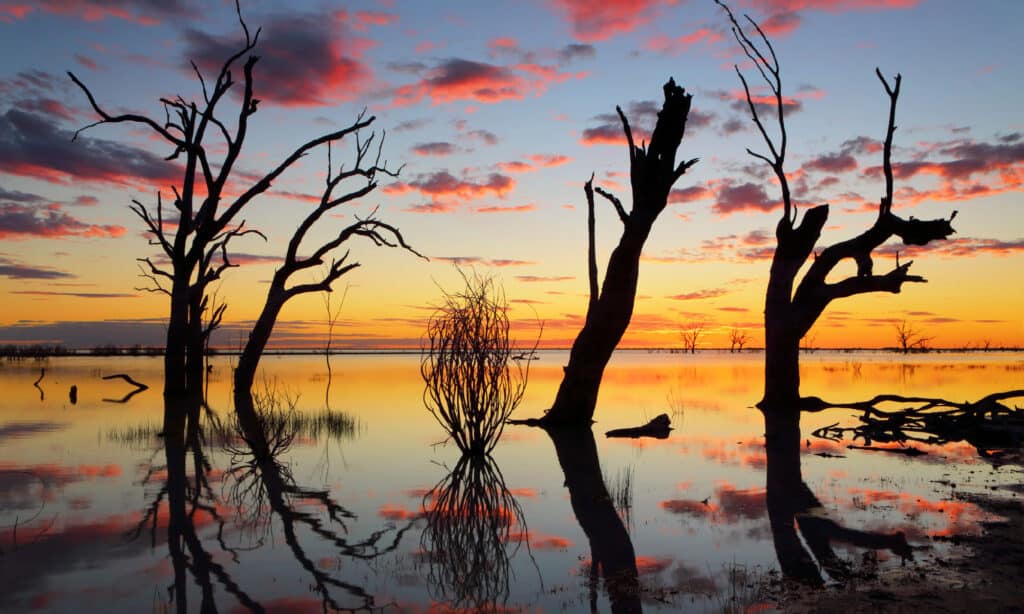
Measuring 117,000 acres, the Menindee Lakes are among the biggest lakes in Australia.
©iStock.com/lovleah
The Menindee Lakes are a group of nine large, yet shallow lakes in southwest New South Wales that encompass a total surface area of 117,000 acres. There are four main lakes in the system: Lake Wetherell, Lake Cawndilla, Lake Pamamaroo, and Lake Menindee, which is the largest. The lakes and their vicinities have been designated as an Important Bird Area (IBA) as they have nurtured up to 222,000 waterbirds, including more than 1% of the world’s population of native and endangered birds.
11. Lake Alexandrina
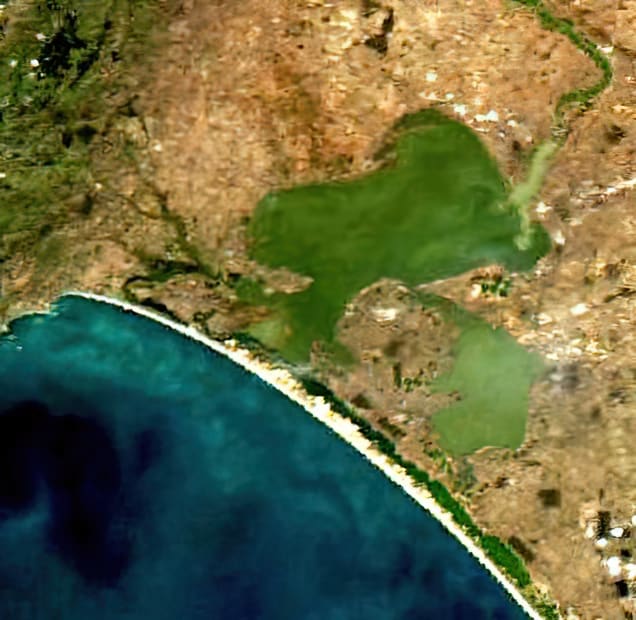
Covering a surface area of 160,640 acres, Lake Alexandrina is the 11th largest lake in Australia.
Lake Alexandrina is a coastal freshwater lake situated in South Australia, lying between the Fleurieu and Kangaroo Island districts. It covers a surface area of 160,640 acres (64,900 ha). It is home to various waterbird species, especially migratory waders (also known as shorebirds) that nest in northern Asia and Alaska. Orange-bellied parrots, vulnerable fairy terns, endangered Australasian bitterns, and other species are maintained by the lake. It is also home to various freshwater fish, such as the invasive European carp. Turtles can also be found in the lake and lizards and snakes around the beach.
10. Lake Yamma Yamma
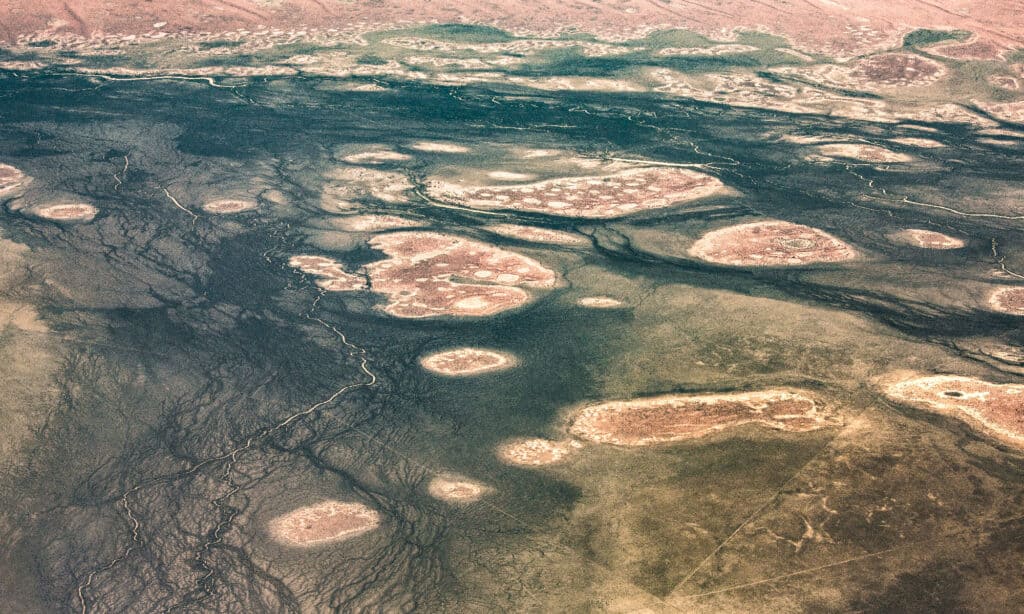
Also known as Lake Mackillop, Lake Yamma Yamma is Queensland’s largest inland temporary lake.
©Winston Wu/Shutterstock.com
Lake Yamma is an ephemeral lake in the dry Channel Country of southwestern Queensland, Australia. The lake, also known as Lake Mackillop, is Queensland’s largest inland temporary lake, with a surface size of 177,916 acres. The lake has sustained more than 1% of the world’s Sharp-tailed Sandpiper, Plumed Whistling-Duck, Australian Pelican populations, and one of the biggest recorded pelican colonies.
9. Lake Argyle
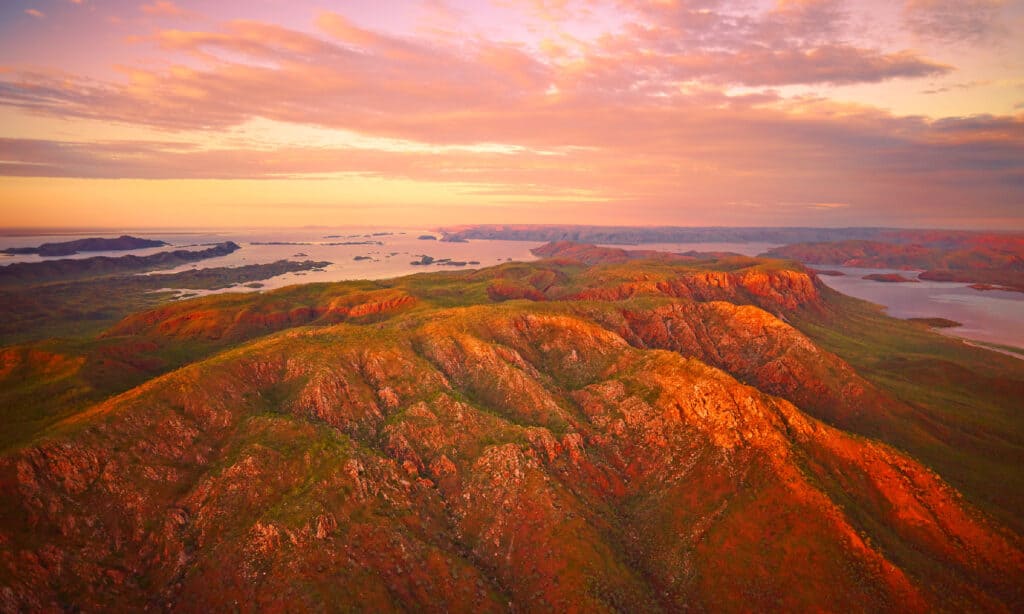
Lake Argyle is among Australia’s most diversified lakes.
©iStock.com/Steve Fraser
With a surface area of 247,7105 acres, Lake Argyle is located in the isolated Kimberley area of Western Australia’s far north. It’s a wildlife lover’s dream, with a plethora of animals. The Old River forms this massive body of water, which draws millions of tourists due to the wide range of activities available. There are 26 endemic fish species here, and encounters with freshwater crocodiles, fish, wallabies, and more than 240 kinds of birds can be experienced on a wildlife tour along the lake’s shoreline. When it comes to native vegetation and wildlife, Lake Argyle is among Australia’s most diversified lakes.
8. Lake Amadeus
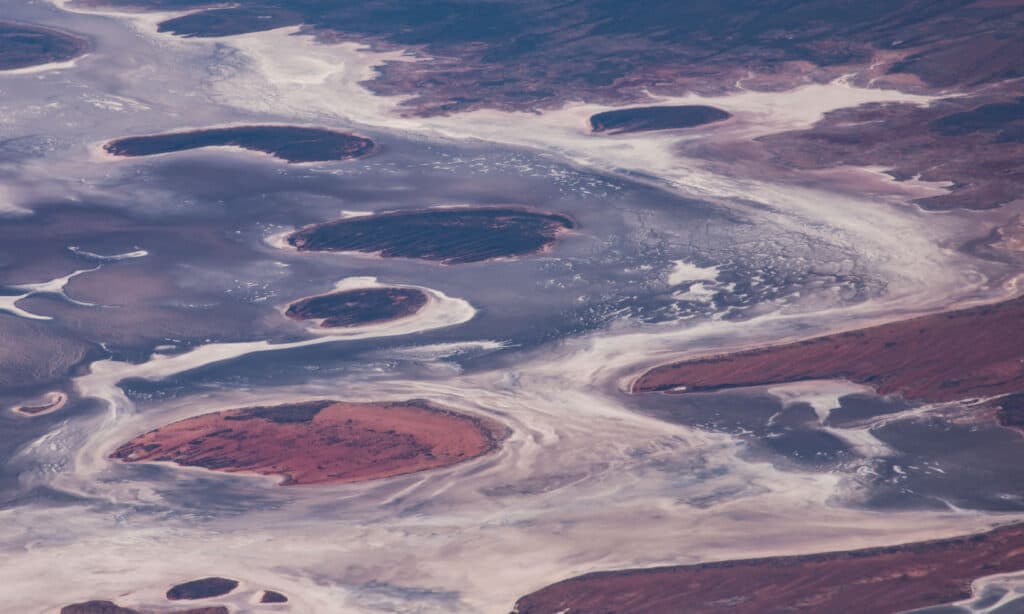
Having a surface area of 255,000 acres, Lake Amadeus is the eighth-largest lake in Australia.
©Hit1912/Shutterstock.com
Lake Amadeus is a large salt lake located in the southwestern part of Australia’s Northern Territory, about 31 miles north of Uluru/Ayers Rock. The lake, part of the greater Amadeus Basin, has a surface area of 255,000 acres. The surface of the lake is generally a shimmering salt rim due to the region’s aridity. Lake Amadeus’ bright white surface is a frightening image in the desert, with approximately 600 million tonnes of salt. Because of the lake’s harsh temperatures and high salinity, it is a relatively unfriendly environment for fauna.
7. Lake MacLeod

The salt in McLeod is ten times more saline than seawater.
©iStock.com/Totajla
Lake McLeod is among Australia’s largest lakes, yet it also has the most room for expansion. It currently covers 370,700 acres (150,000 hectares), potentially expanding to 543,000 acres (220,000 hectares). The salt in Lake McLeod is ten times more saline than seawater, making it particularly significant. The majority of Lake Macleod is generally dry, and periodic bodies of brine encompass 23 square miles of its surface area. BirdLife International has designated 147 square miles of the lake as an Important Bird Area (IBA). It supports more than 1% of the world’s populations of some native and critically endangered birds.
6. Lake Barlee
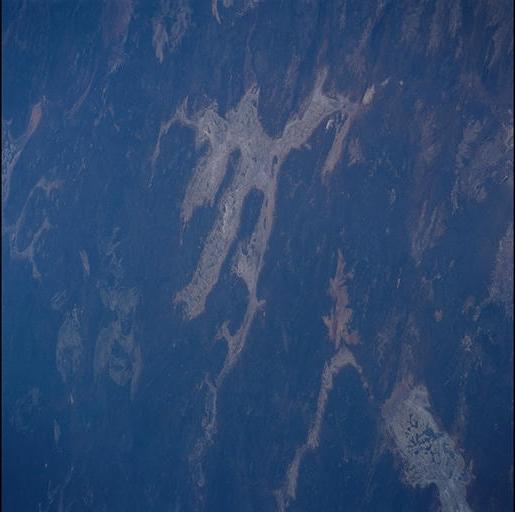
Lake Barlee is Western Australia’s second-largest lake.
With 489,300 acres (1,980 km2) of surface waters, Lake Barlee is Western Australia’s second-largest lake. This intermittent saline lake straddles the midlands of Menzies and Sandstone. Only direct precipitation and many creeks in the vicinity provide water to the lake. Its bottom is barren, with hundreds of tiny greenstone rock islets. At least five of these islands may sustain huge populations of breeding birds, especially the banded stilt. The black swan, white-headed stilt, Australian shelduck, pink-eared duck, and red-capped plover are the other water birds that breed at the lake.
5. Lake Frome
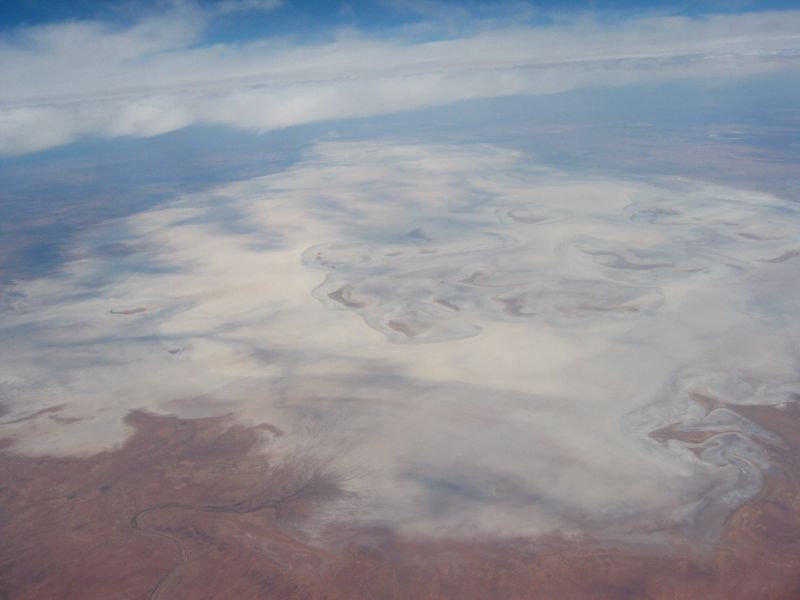
The 5th largest lake in Australia is Lake Frome.
©Percita Dittmar from Canberra, Australia / Creative Commons – License
Lake Frome is a huge endorheic lake situated east of the Northern Flinders Ranges in South Australia. It is a vast, shallow, non-forested salt pan covering a surface area of 641,520 acres. Like Lake Eyre, the lake is another illustration of an ephemeral stream floodplain complex in the Great Artesian Basin’s primary drainage zone. In 2004, the lake was officially renamed Lake Frome / Munda. In 1991, the entire lake was designated as the Lake Frome Regional Reserve due to its “regional geological significance.”
4. Lake Mackay
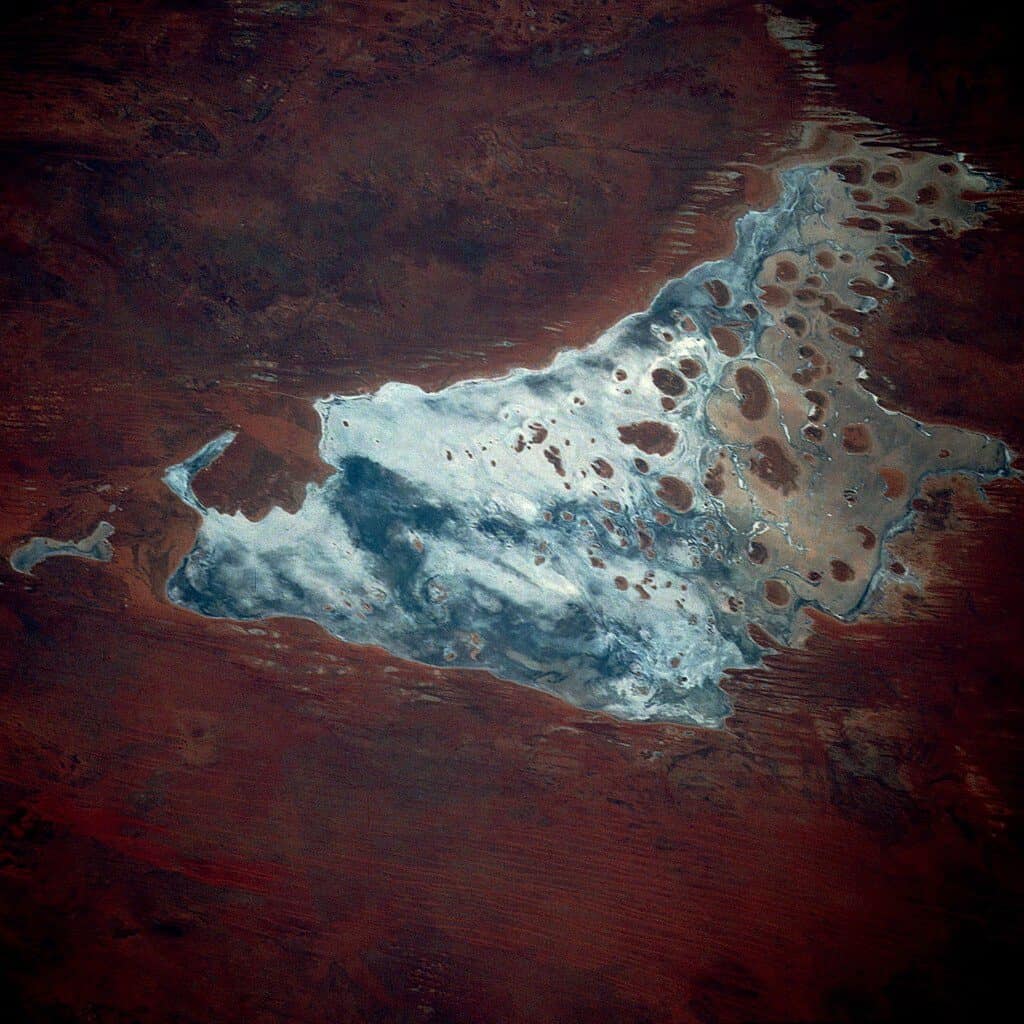
The fourth-biggest lake in Australia is Lake Mackay.
Lake Mackay, also known as Wilkinkarra by the indigenous Pintupi people, is another ephemeral salt lake in Australia. It is one of numerous lakes in the Pilbara and the northern Goldfields-Esperance region of Western Australia and the Northern Territory. Lake Mackay has the largest surface area of hundreds of temporary salt lakes dispersed across the region, covering 1,170,538 acres. Striped bass is the most prevalent species caught here. Renowned northern Australian fish, including fingermark, king and threadfin salmon, and barramundi, thrive in the zone.
3. Lake Gairdner
In the Australian state of South Australia lies this endorheic salt lake, which is the third largest lake in Australia when it is flooded. Lake Gairdner is over 99 miles long and 30 miles wide; the overall surface area, however, is well over 1 million acres. It is located 270 miles northwest of the state capital of Adelaide. Lake Everard, Lake Harris, and Lake Gairdner make up Lake Gairdner National Park. Land speed record attempts occur on its salt flats, including the annual Speed Week event. Team New Zealand recently set a world record for new wind-powered land speed of 222.43km/h on the lake after it was dried out.
2. Lake Torrens
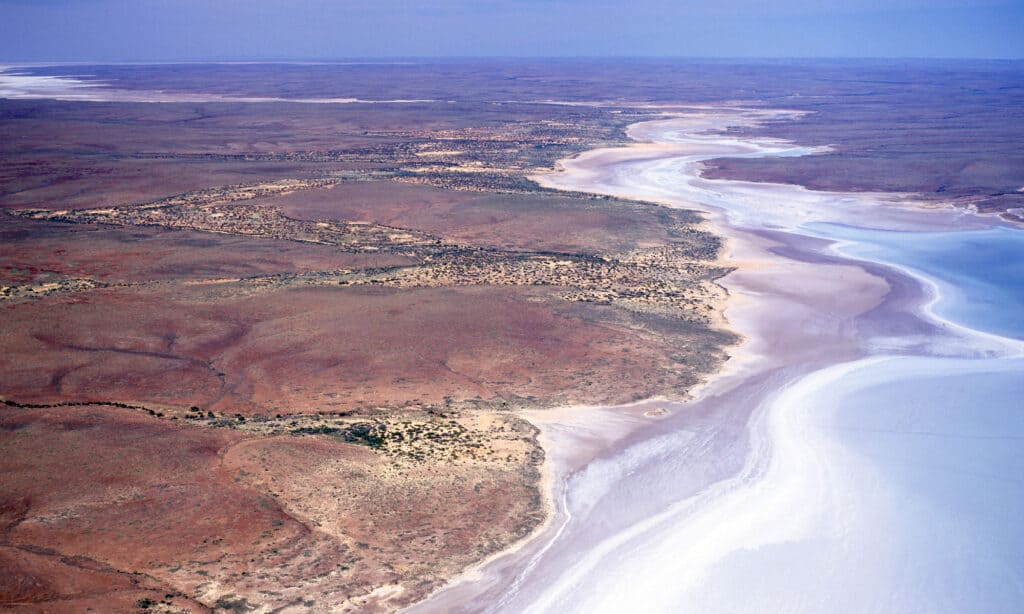
With a surface area of 1.42 million acres, Lake Torrens is the second largest lake in Australia.
©iStock.com/JohnCarnemolla
Lake Torrens is a massive lake in east-central South Australia, west of the Flinders Ranges and 345 kilometers (214 miles) northwest of Adelaide. It’s a salt lake with a surface size of 1.42 million acres and a width of 40 miles by 149 miles, making it Australia’s second-largest lake when full of water. The lake water used to be fresh to brackish 35,000 years ago, but it has grown increasingly saline. The Lake Torrens catchment is typically an endorheic basin with no water flowing to the ocean.
1. Kati Thanda-Lake Eyre
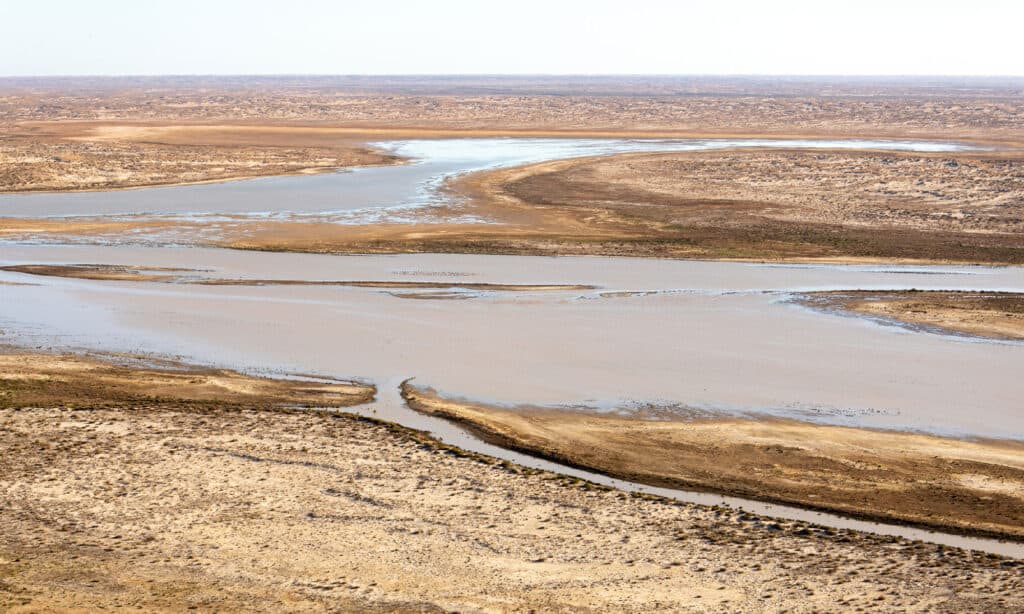
The biggest lake in Australia is Kati Thanda-Lake Eyre.
©iStock.com/Heather Rose
Lake Eyre, officially known as Kati Thanda-Lake Eyre, is Australia’s largest lake. It is located in South Australia and spans 2.348 million acres. Lake Eyre is a salt lake that is mostly dry for most of the year but fills with water during wet seasons. When it fills up during the rainy season, it becomes a popular resting spot for various migrating birds. Two parks protect lake Eyre, both ensuring that the lake and its species are conserved and safeguarded.
The photo featured at the top of this post is © iStock.com/lovleah
Thank you for reading! Have some feedback for us? Contact the AZ Animals editorial team.






